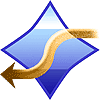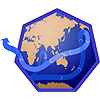Grade 7 - Ocean in Motion
An 8-9 Week Unit for Middle School Level
Essential Questions:
- What are the patterns of physical changes in aquatic environments?
- How do they affect us?
- What are the major weather and ocean circulation systems in Alaska?
Enduring Understandings:
- Physical changes in the aquatic environment occur on a daily, seasonal, and long-term basis.
- Weather systems and ocean systems have major influences on one another and the dynamics of matter and energy.
- Science and technology can be used to detect and solve problems.
Ocean Literacy Principles Addressed:
- The earth has one big ocean with many features.
- The ocean is a major influence on weather and climate.
This unit is designed for seventh grade, but can be adapted to other middle school grades. The unit is introduced with a true story of rubber bath toys that were lost overboard in the Pacific Ocean and found on beaches around the world. Students investigate physical patterns in the oceans as they progress through a series of investigations to learn about weather and ocean circulation patterns, waves and tides, temperature and salinity in relation to currents, and the effects of ocean floor topography on currents. They then choose a culminating activity to examine the effects of ocean movement in real-life or theoretical situations.
 |
Investigation 1: Where Did the Rubber Bath Toys Go? How did rubber bath toys lost overboard in the Pacific travel to beaches many miles away? |
 |
Investigation 2: Weather and Circulation Systems What causes surface ocean currents? |
 |
Investigation 3: Waves and Tides In this 7- to 10-day investigation, students develop an understanding of waves and tides and their motion through discussion, demonstration, and hands-on investigation. They demonstrate wave motion in containers, and create marigrams to show local tide data and to compare tide patterns from different parts of the world. They use their knowledge to consider whether waves or tides could account for the movement of the bath toys to their final locations. What is a wave in the water? How are waves and tides related? What is the tidal pattern in a local or other Alaska bay? Why don’t the daily tides follow the 24-hour day of the earth? How do our tides compare with those in other locations? |
 |
Investigation 4: Temperature and Salinity Effects on Deep Ocean Currents In this 7-9 day investigation, students are engaged in a variety of hands-on demonstrations and experiments that will help them understand thermohaline circulation in the ocean. They begin with an introductory activity that helps them to review or arrive at a definition of density, and then they demonstrate the effects of temperature and salinity on density and design an experiment to simulate ocean mixing. They experiment further with hot and cold water as they consider the effects of tropical and polar climates on ocean currents, and end by writing conclusions to summarize their learning. How do the densities of fluids vary, and how does that affect their behavior? How do salinity and temperature affect ocean currents? Do polar and tropical climates affect water temperature and ocean currents? |
 |
Investigation 5: Seafloor Topography How does seafloor topography affect ocean current flow? |
 |
Investigation 6: Debris Detectives Field Trip How can we observe and measure movements in a local water body? |
 |
Investigation 7: Global Conveyor Belt How do all of the pieces of the “ocean motion puzzle” fit together?
As a class, students brainstorm and design an action project to apply their learning from the unit. Finally, students re-evaluate their answers to Investigation 1 using concepts and vocabulary from the entire unit to make sense of the story of the rubber bath toys. |
Authors:
Cally Leader, Anchorage School District
Steve Bay, Anchorage School District
Scott McKim, Anchorage School District
Roger Price, Fairbanks North Star Borough School District
Stephanie Hoag, Curriculum Consultant, Juneau
Marla Brownlee, Alaska Sea Grant
Marilyn Sigman, Center for Alaskan Coastal Studies




